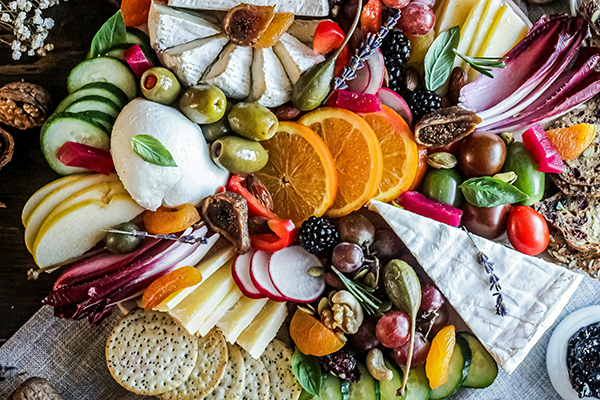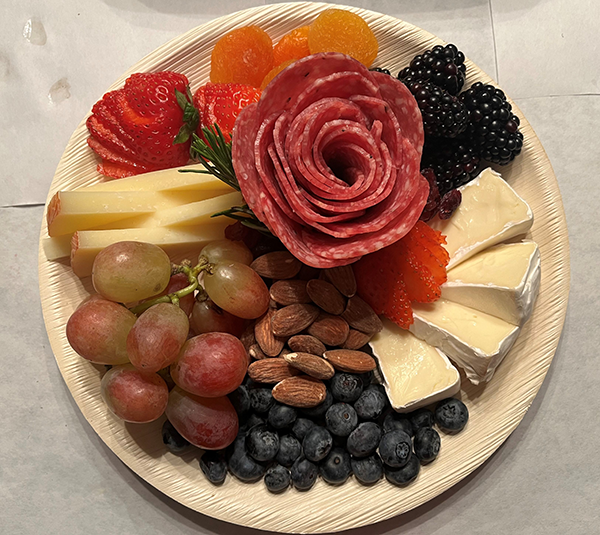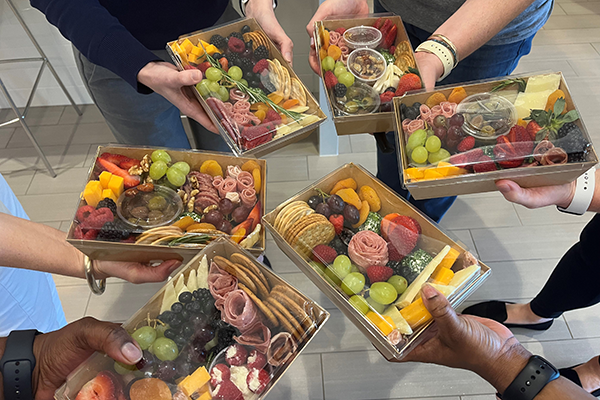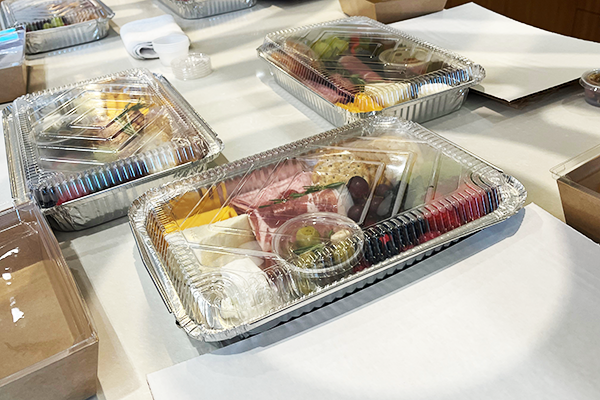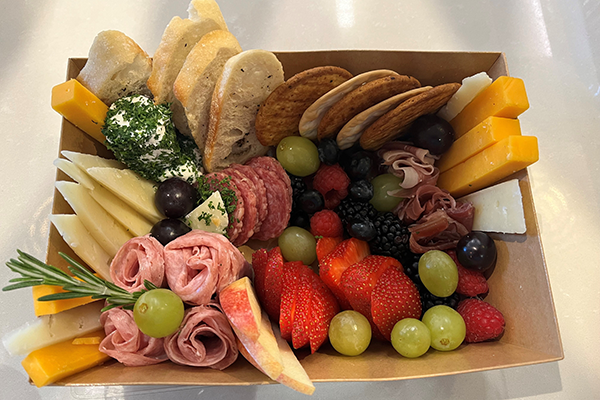Charcuterie (pronounced shaar-koo-tuh-ree) boards are a great way to bring people together and spark conversation. Whether served as a causal snack, an upscale appetizer or part of a lavish feast, the charcuterie board is a beloved culinary tradition. With a little planning, you can create a healthy and delicious charcuterie board that everyone will love.
What is Charcuterie?
Charcuterie is the culinary art of preparing and assembling cured meats. The word originated in France from two terms – chair meaning meat and cuit meaning cooked.
Charcuterie boards came about largely out of necessary, rooted in traditions of preserving and savoring meats in the days long before refrigeration. These traditional charcuterie boards were simply meat platters, but today, they are enjoyed worldwide with variations reflecting regional ingredients and personal preferences.
Learn how to create healthy + delicious #charcuterie boards that will impress your guests + satisfy your taste buds! #saslife Click To TweetBuilding Your Charcuterie Board
At first glance, charcuterie boards can be intimidating. However, creating a healthy charcuterie board is simple and all about balance and variety. The more flavors, colors and textures you can include, the better. Here’s a basic blueprint to help you build your best board:
- Load up on fruits and vegetables. Amp up the nutrient density of your board by including a colorful variety of fruits and vegetables. Provide a combination of fresh, dried, pickled, roasted and/or air-fried for different textures. Some common fruits and vegetables to include on a charcuterie board are:
-
- Fresh fruits: grapes, berries, figs, apples, pears, apricots, melon
- Dried fruits: apricots, figs, cranberries, raisins, dates
- Vegetables: carrots, cucumbers, cherry tomatoes, bell peppers, radishes
- Pickled vegetables: gherkins, pickled onions, pickled beets
- Incorporate high-quality meats, cheeses, or other proteins. Choose uncured, natural deli meats that do not contain nitrates or nitrites. Also, look for lower sodium varieties when able. When it comes to cheese, include a variety of hard and soft cheeses, and consider including some dairy-free options as well. You can also add non-processed and/or plant-based proteins like smoked salmon, shrimp, hard-boiled eggs, edamame, or even caviar.
- Include healthy fats. Look for raw or dry-roasted nuts and seeds without added oils or sugars. You can season and roast them yourself if you want a pop of flavor. Olives are another great addition to any board – just place them in a bowl so their juices don’t run onto the other items.
- Add whole grains. Opt for whole grain or seeded bread and crackers for a boost of fiber and nutrients. Also, consider including some gluten-free options like these crackers.
- Offer healthy dips or spreads. Hummus, gourmet mustard, all-fruit preserves, Greek yogurt-based dips and guacamole are all healthier alternatives to creamy dips.
- Garnish with fresh herbs. For a decorative touch and added flavor, strategically place a few sprigs of rosemary, basil, parsley or dill on your board.
- Enjoy with moderation in mind. To help avoid overeating, make a plate of your favorite items instead of eating straight off the board.
Arranging Your Charcuterie Board
Charcuterie boards are supposed to be rustic and a little messy, so be creative and have fun! There are no rules when it comes to creating charcuterie boards, but here are some general tips to get you started:
- Start with bigger items first (meat, cheese, crackers, etc.). If you have larger items in dishes (like dips or spreads), place these on opposite sides of the board and surround with items that will be used for dipping/spreading (like crackers, bread or vegetables).
- Arrange ingredients diagonally, balancing food size, color, etc.
- If you’d like to get extra fancy, try your hand at the infamous meat rose. These can be made in different ways (hand rolling method, glass method) and in varying sizes, using 2-10+ slices of meat. You can also skip the roses and simply fold meat into fans or ribbons. Or omit the meat entirely.
- Finish by filling in the gaps with fresh fruit, nuts and seeds, and garnish with fresh herbs.
Host a DIY Charcuterie Night
Once you’ve made a few charcuterie boards, invite friends and family over for a fun, engaging evening of charcuterie. To host your own DIY charcuterie night:
- Gather Ingredients. Pickup a variety of cured meats, cheeses, fruits, vegetables, bread/crackers, nuts and spreads. You’ll also need some type of serving platter/board, knives and utensils (or ask your guests to bring these from home).
- Set the Table. Layout your selection of ingredients on separate platters than can be passed around. Alternatively, pre-portion a set of ingredients for each guest at their own place setting for them to then arrange on their board.
- Get Creative. Encourage everyone to mingle and have fun with their food combinations and presentations.
- Share and Socialize. Once everyone has created their board, start tasting while sharing your favorite combinations and recipes.
With these tips, you’ll be able to create a healthy and delicious charcuterie board that will impress your guests and satisfy your taste buds.
Share your favorite charcuterie creations in the comments!
